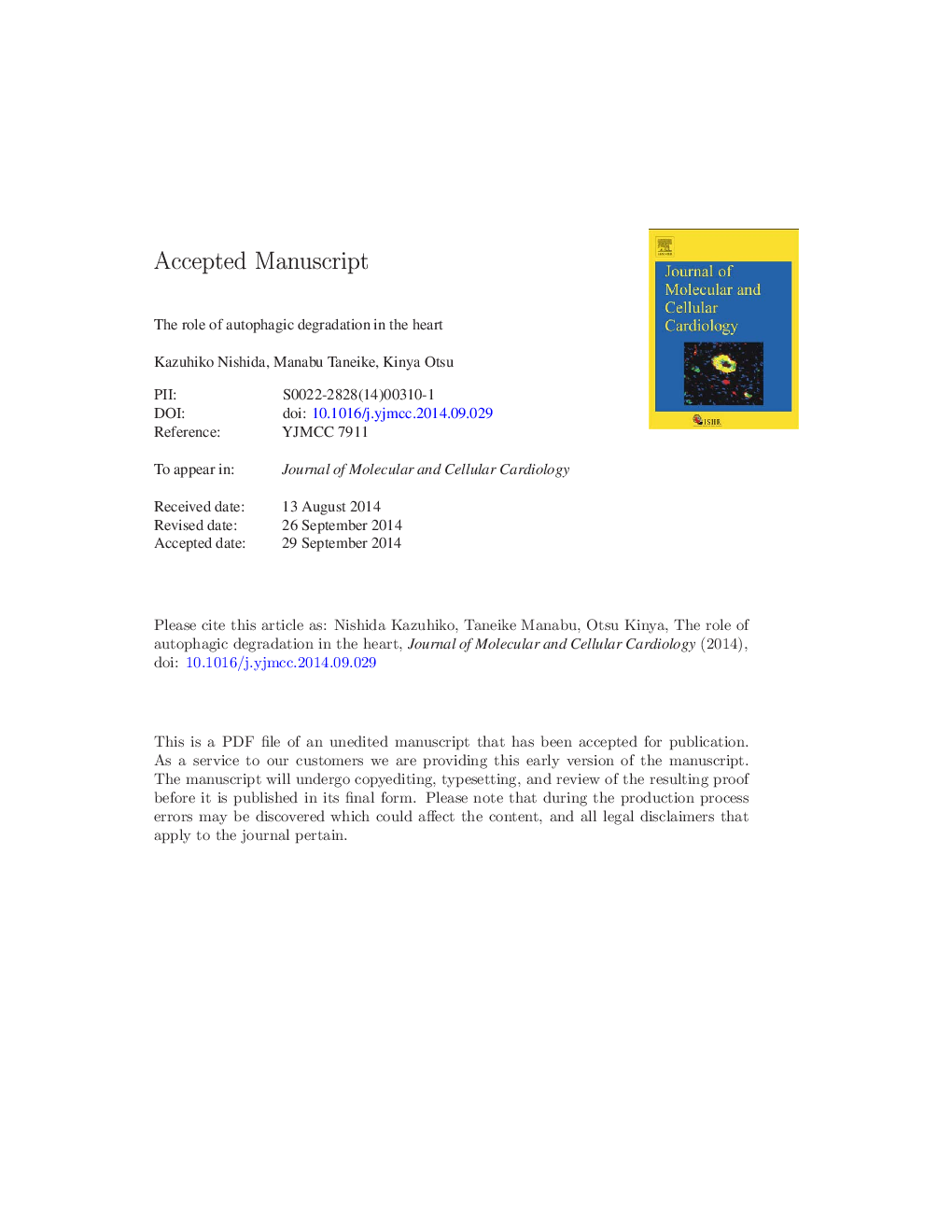| Article ID | Journal | Published Year | Pages | File Type |
|---|---|---|---|---|
| 8474506 | Journal of Molecular and Cellular Cardiology | 2015 | 23 Pages |
Abstract
Autophagy has evolved as a conserved process for bulk degradation and recycling of cytoplasmic components, such as long-lived proteins and organelles. Macroautophagy is the most prevalent form and thus referred to as autophagy. Autophagy is initially considered to be a non-selective process as an adaptive response to nutrient starvation. However, damaged mitochondria are selectively removed by autophagy, called mitophagy. Autophagy plays essential roles in starvation, cardiac remodeling, reverse remodeling, aging and inflammation to maintain cellular homeostasis in the heart. This review discusses some recent advances in understanding the basic molecular mechanisms underlying autophagosome and autolysosome formation and mitophagy and the roles of autophagy in cardiomyopathy. This article is part of a Special Issue entitled "Mitochondria: From Basic Mitochondrial Biology to Cardiovascular Disease".
Keywords
forkhead box class OPINK1SNARETLRATGAMPKBclBNIP3VPSLVADLC3Stx17sequestosome 1PI3PNIXUNC-51-like kinaseDfcp1double FYVE-containing protein 1Ambra1TACHDACPI3KmTORAMP-activated protein kinaseMitochondrial DNAULKp62/SQSTM1ROSAutophagyinflammationReverse remodelingToll-like receptorCardioprotectionmtDNAendoplasmic reticulumTranscription factorFoxOphosphatidylethanolamineLAMPB-cell lymphomaVacuolar protein sortingautophagy-relatedMitophagyMitochondriamammalian target of rapamycinhistone deacetylaseLysosome-associated membrane proteinmicrotubule-associated protein 1 light chain 3GABARAPReactive oxygen speciessoluble N-ethylmaleimide-sensitive factor attachment protein receptor
Related Topics
Life Sciences
Biochemistry, Genetics and Molecular Biology
Cell Biology
Authors
Kazuhiko Nishida, Manabu Taneike, Kinya Otsu,
